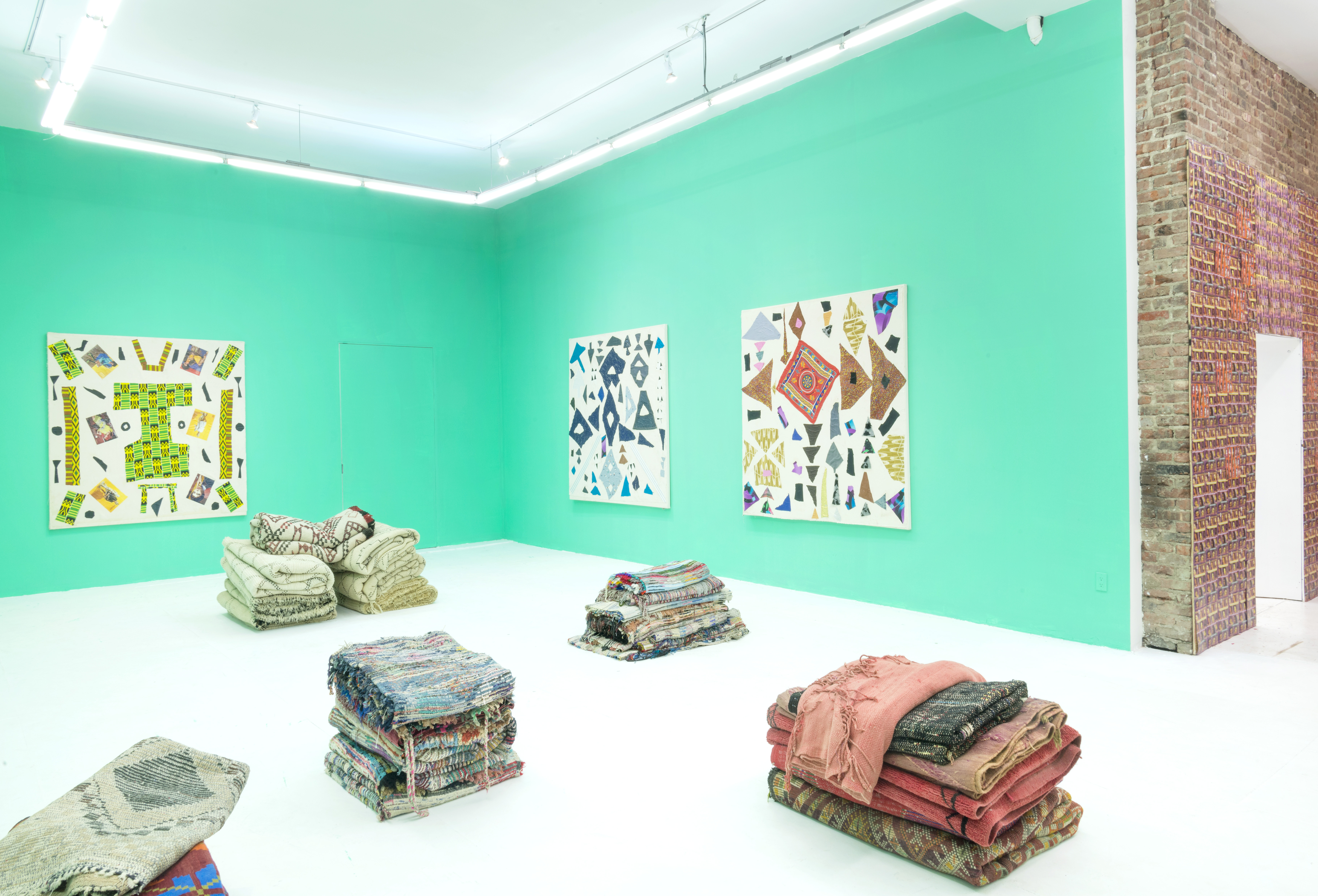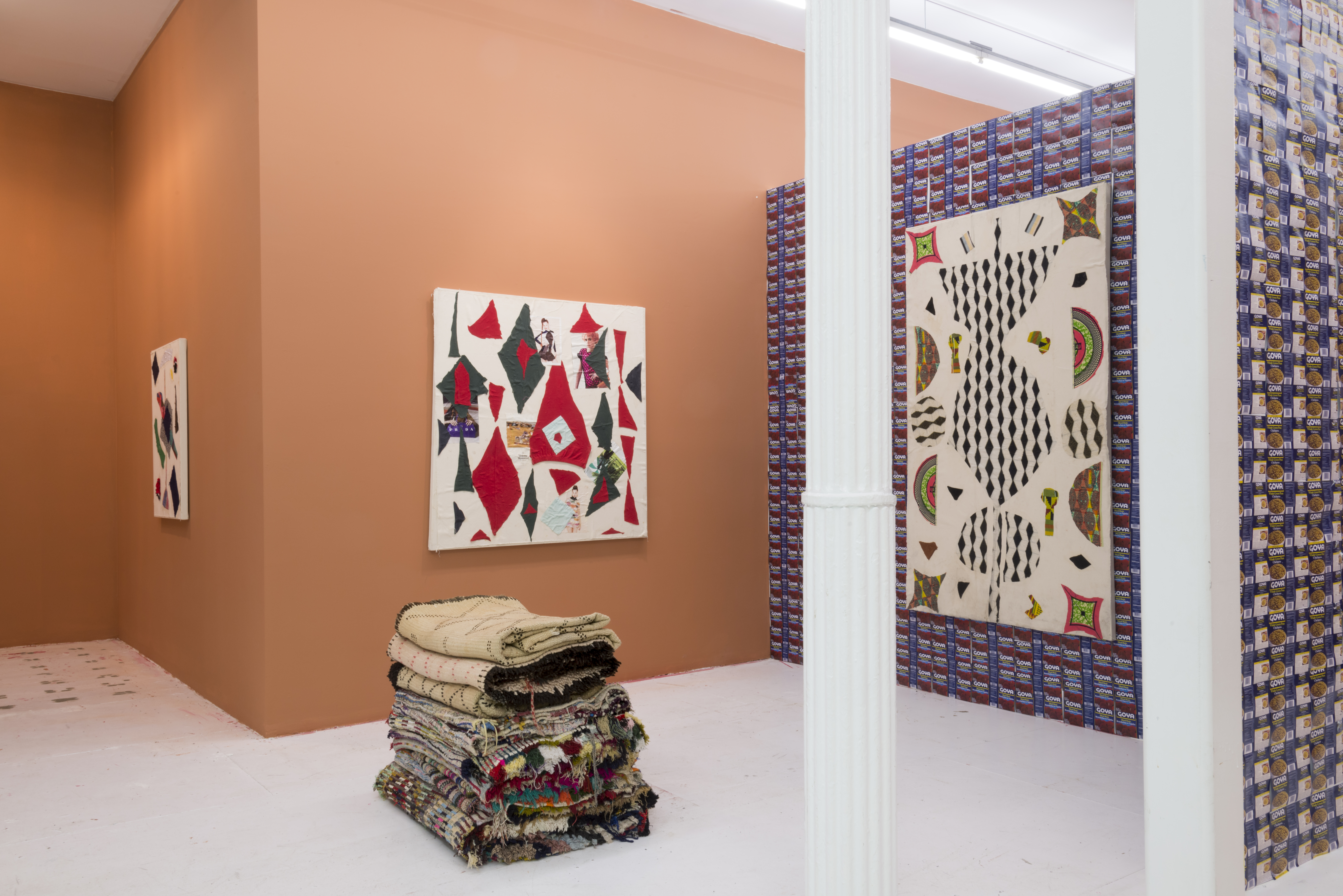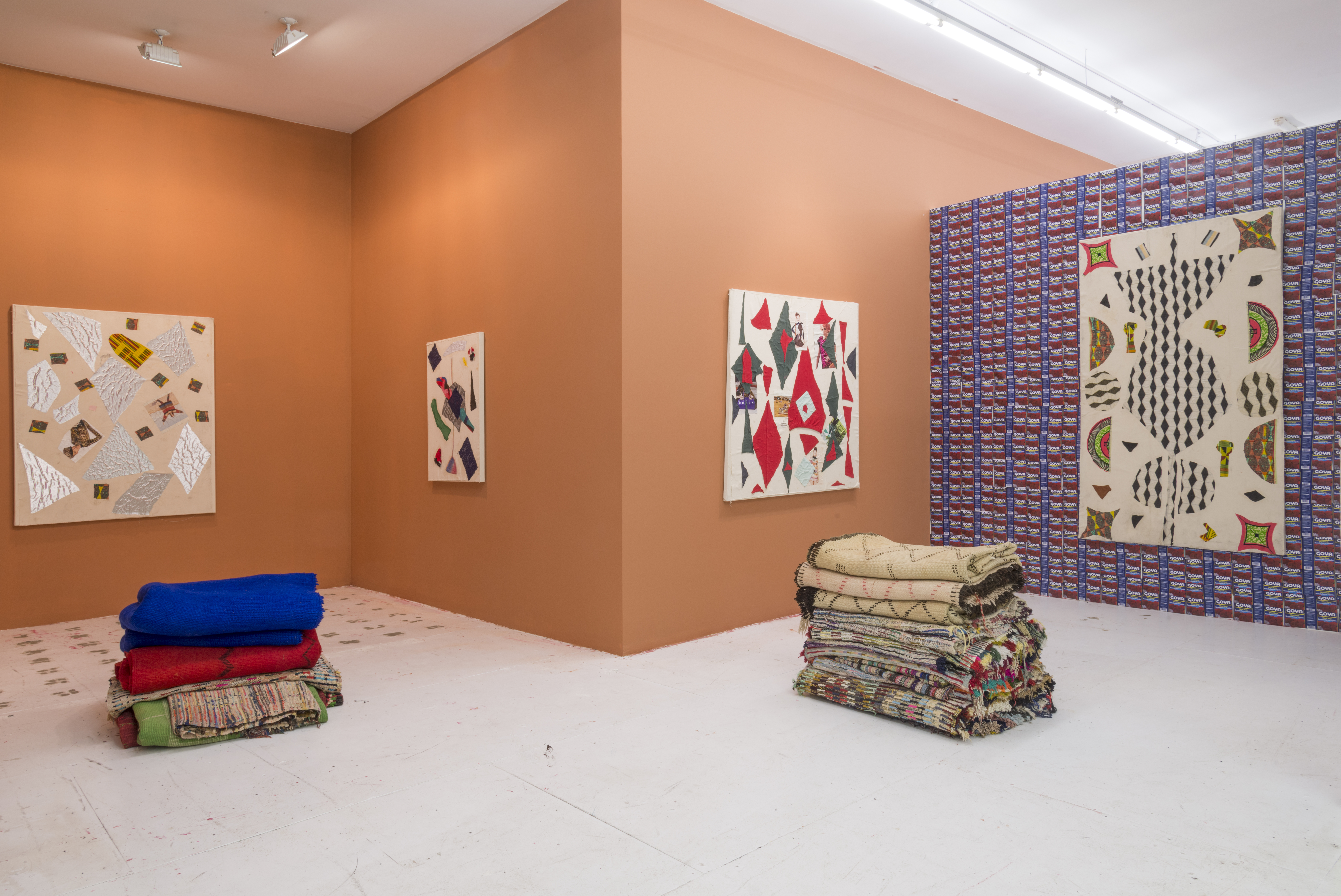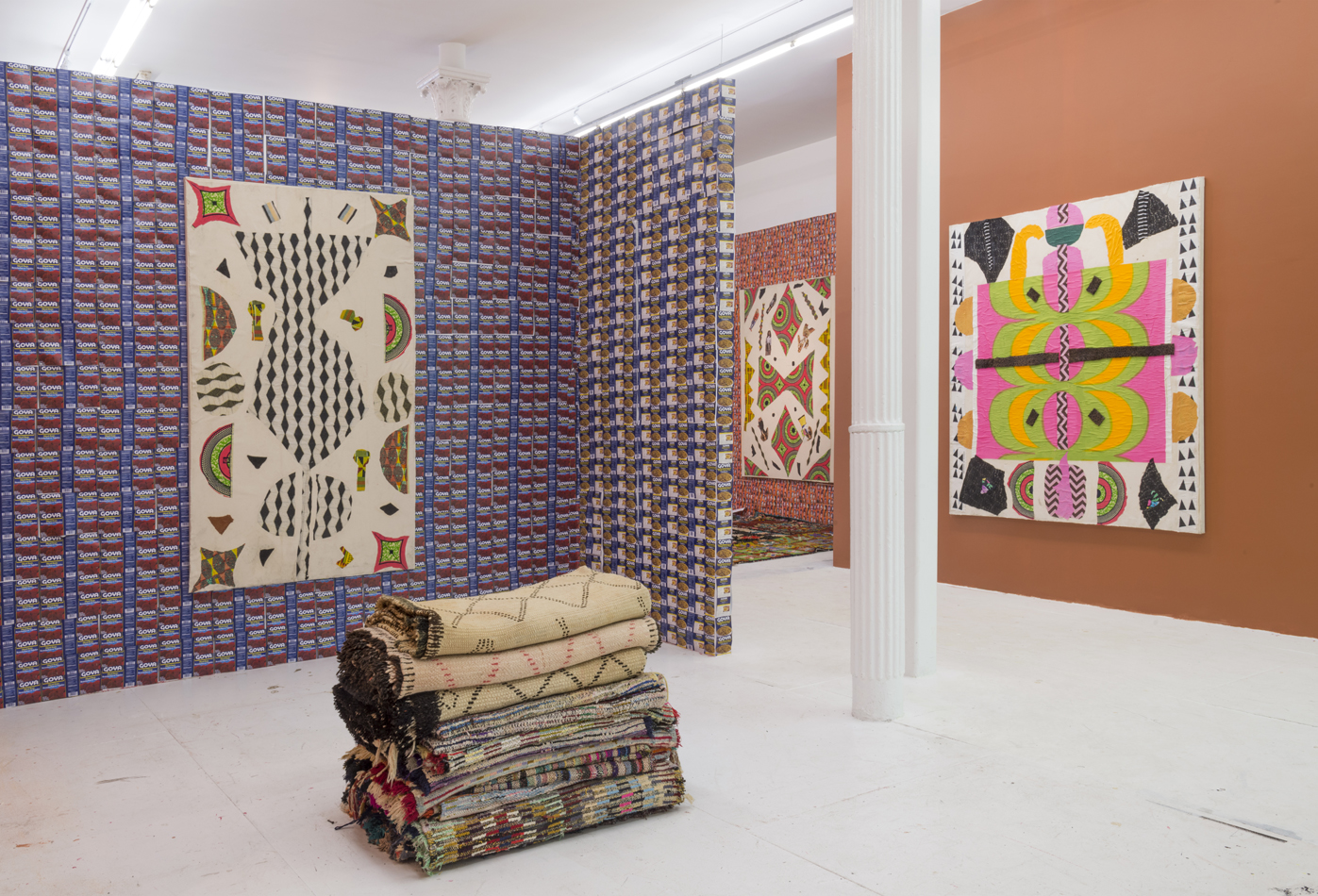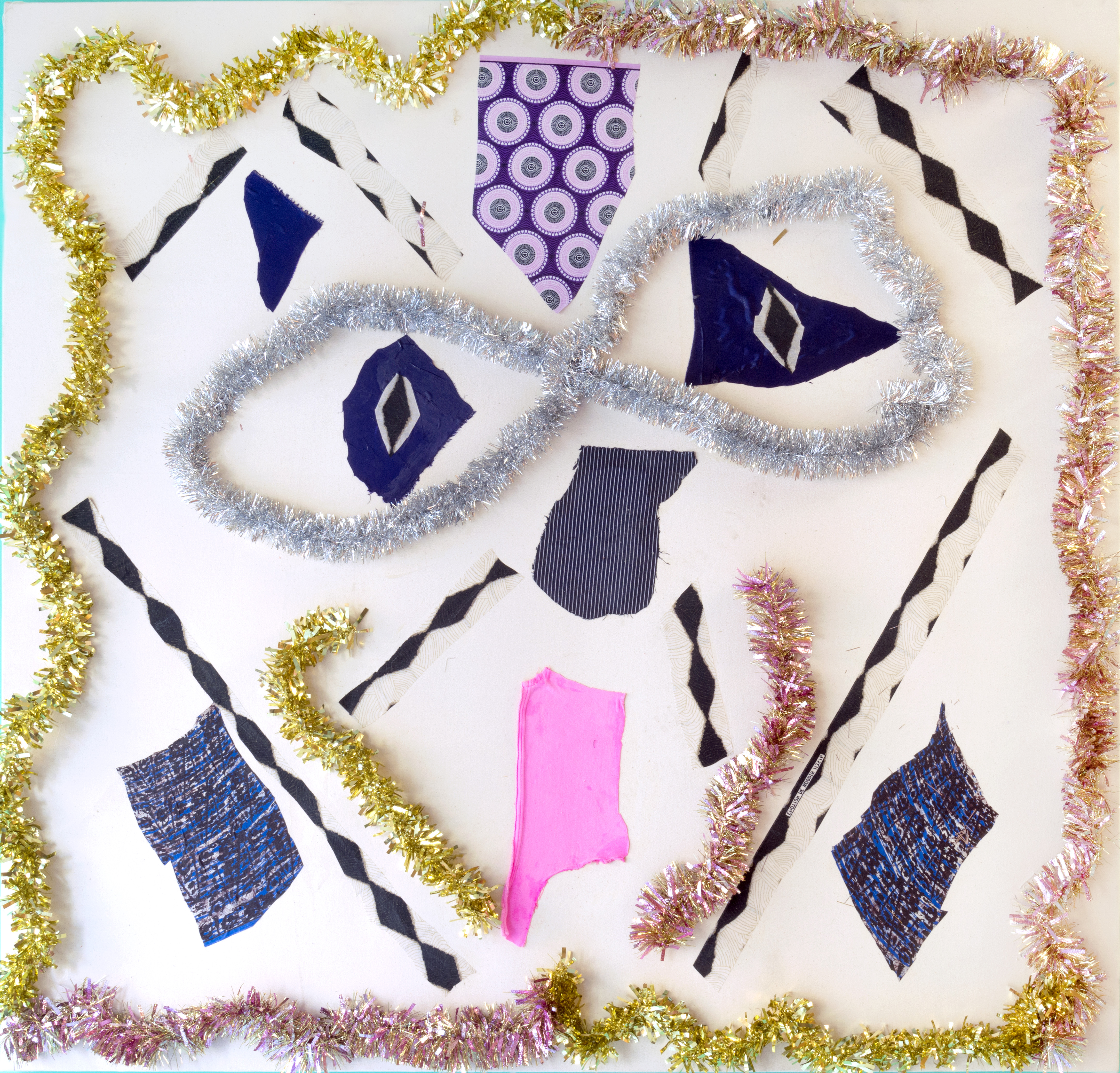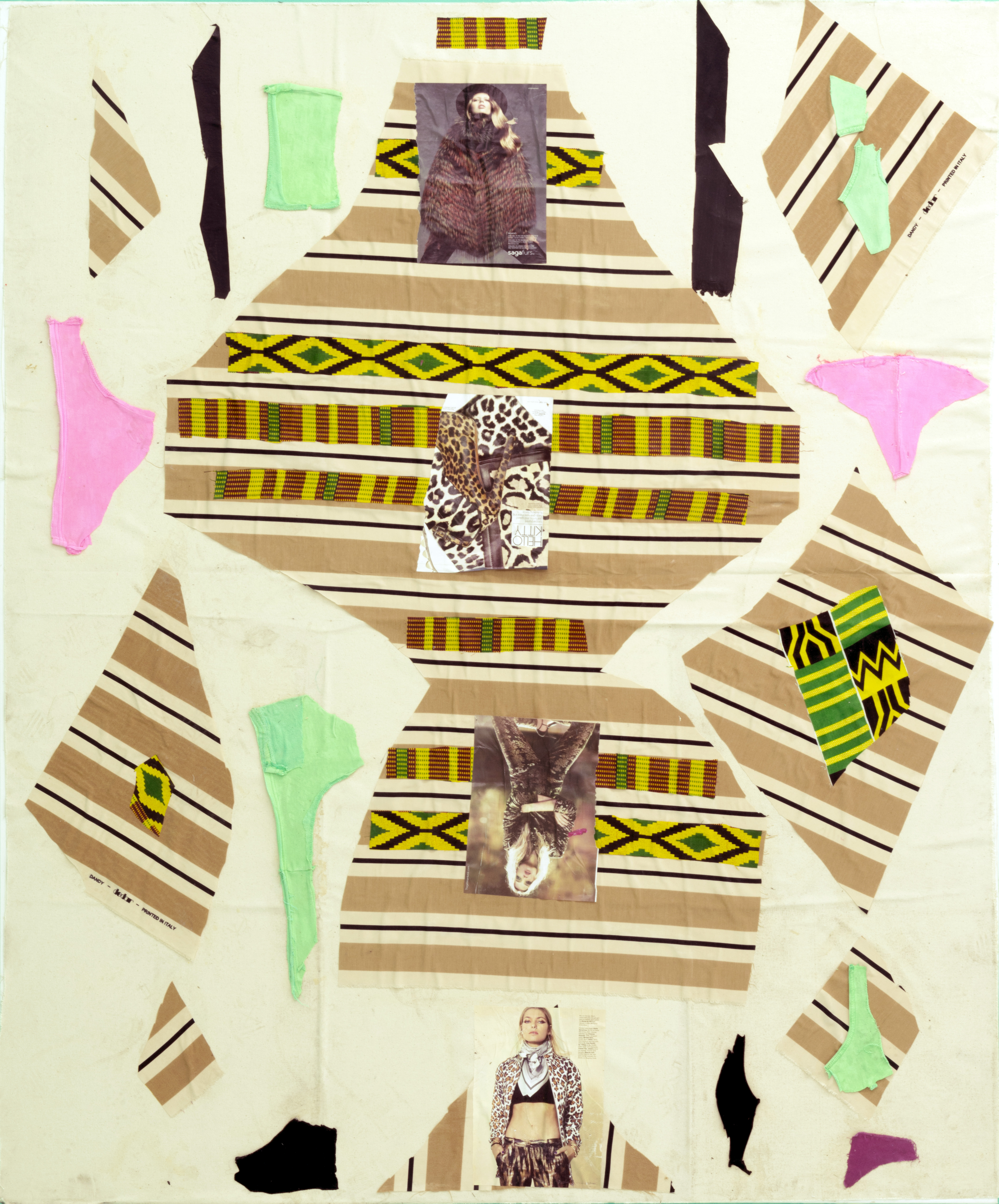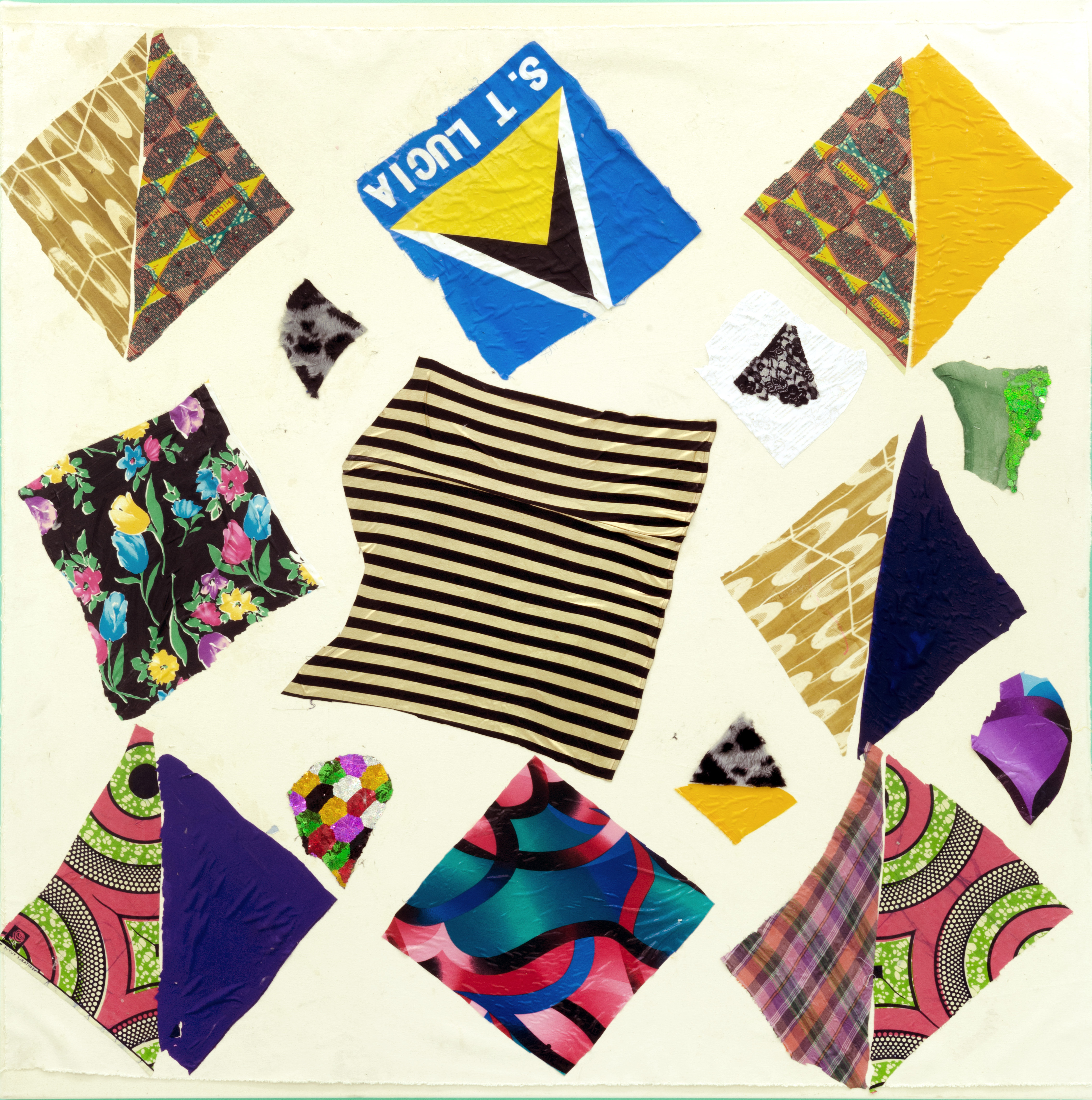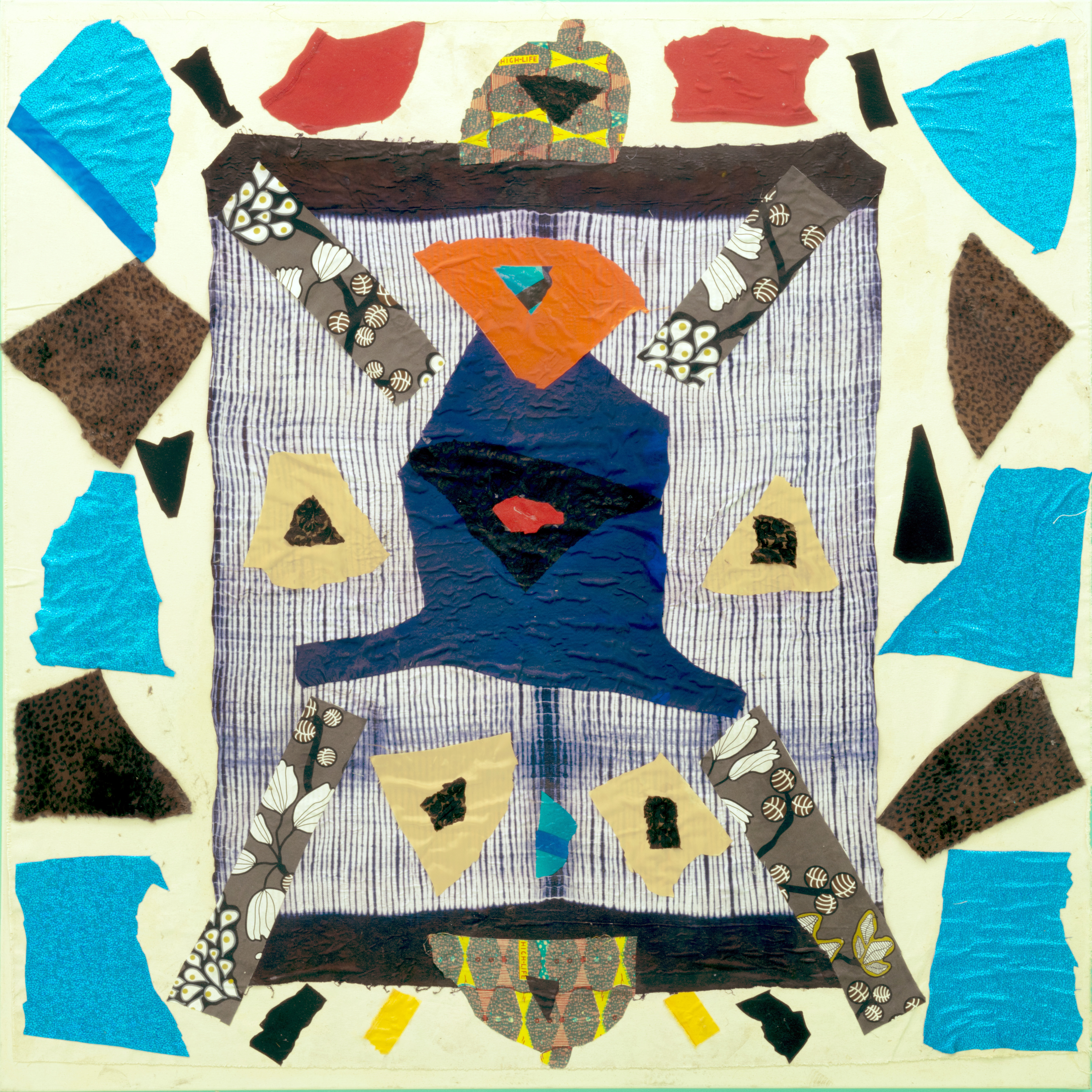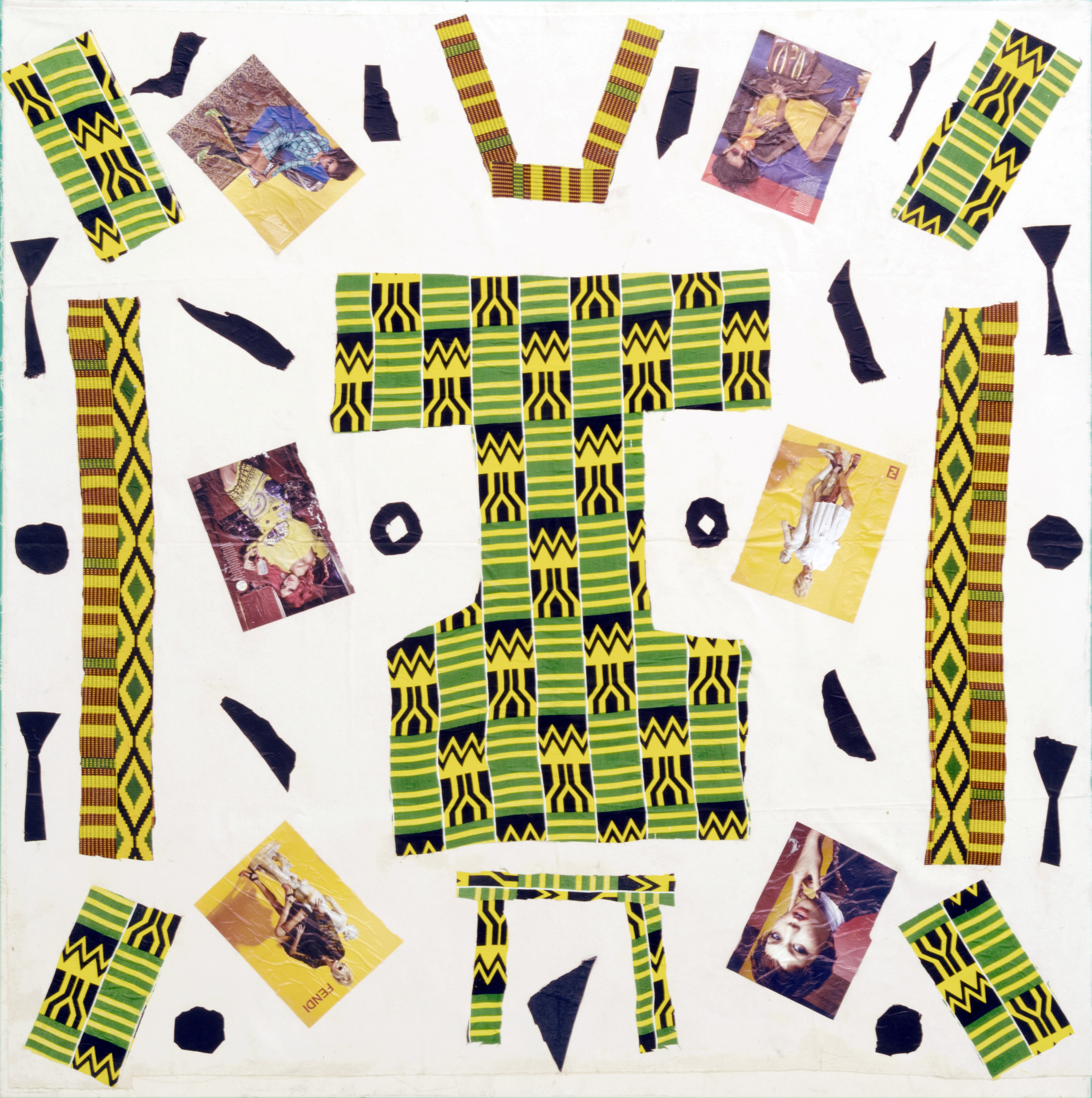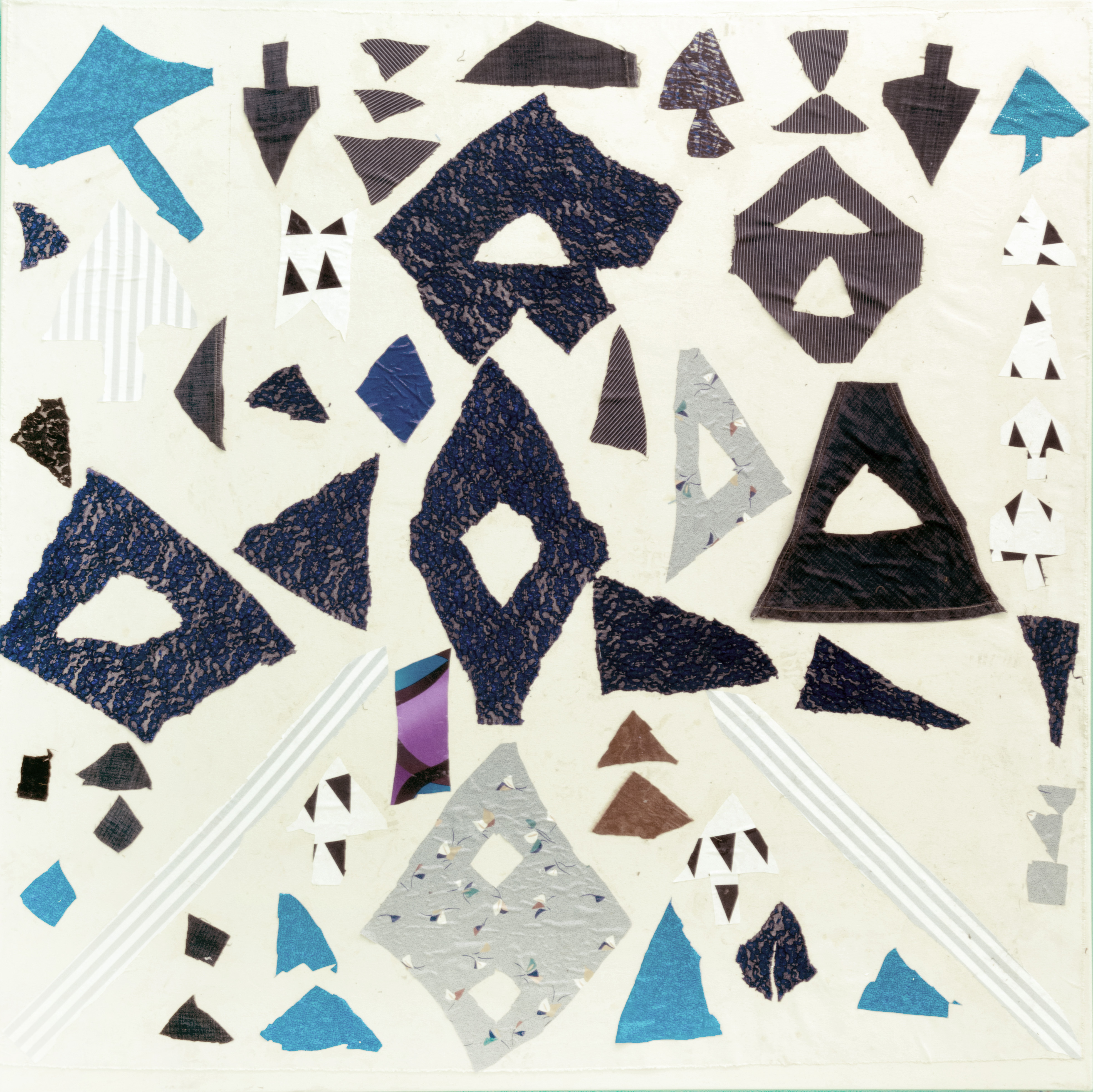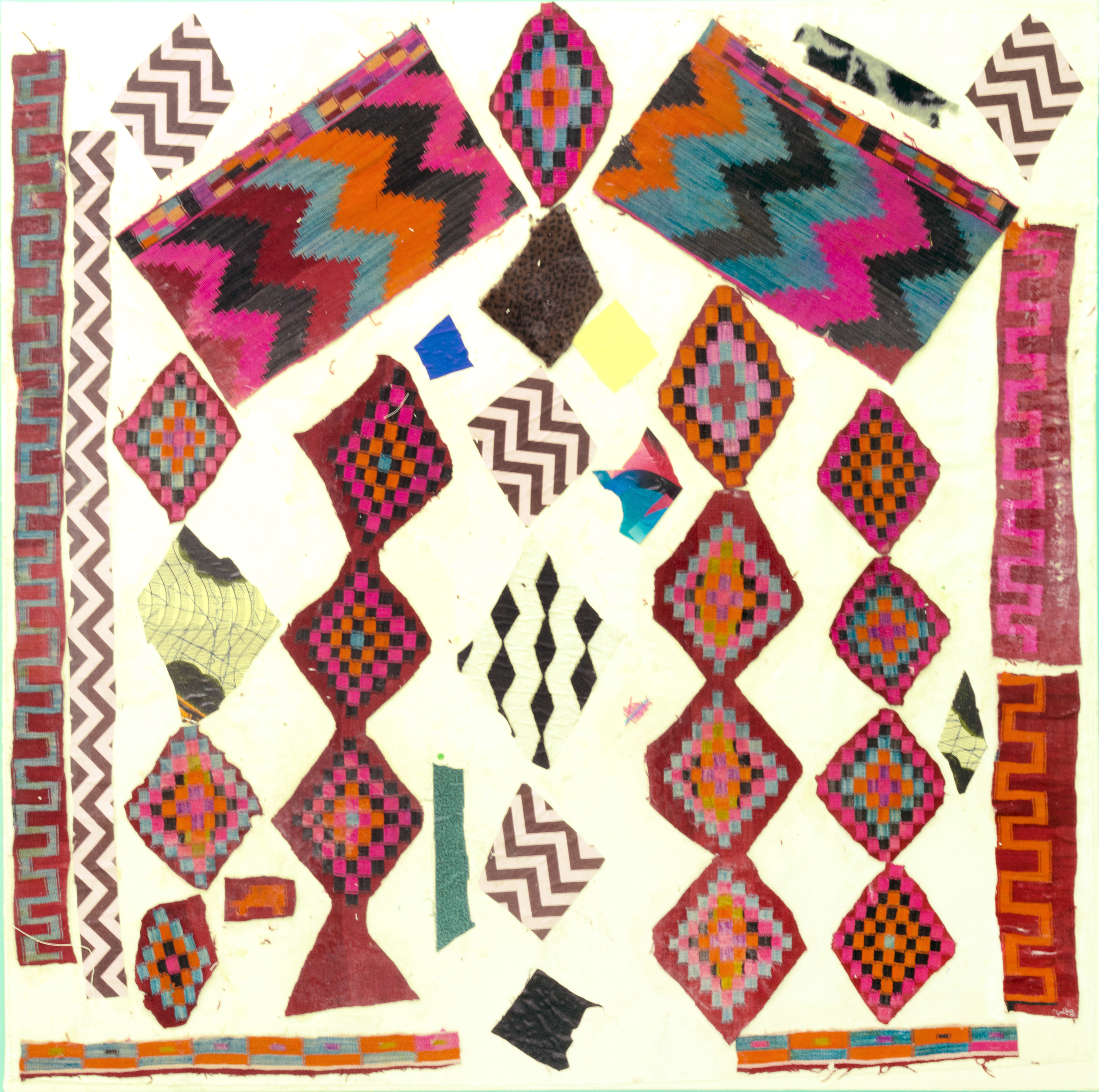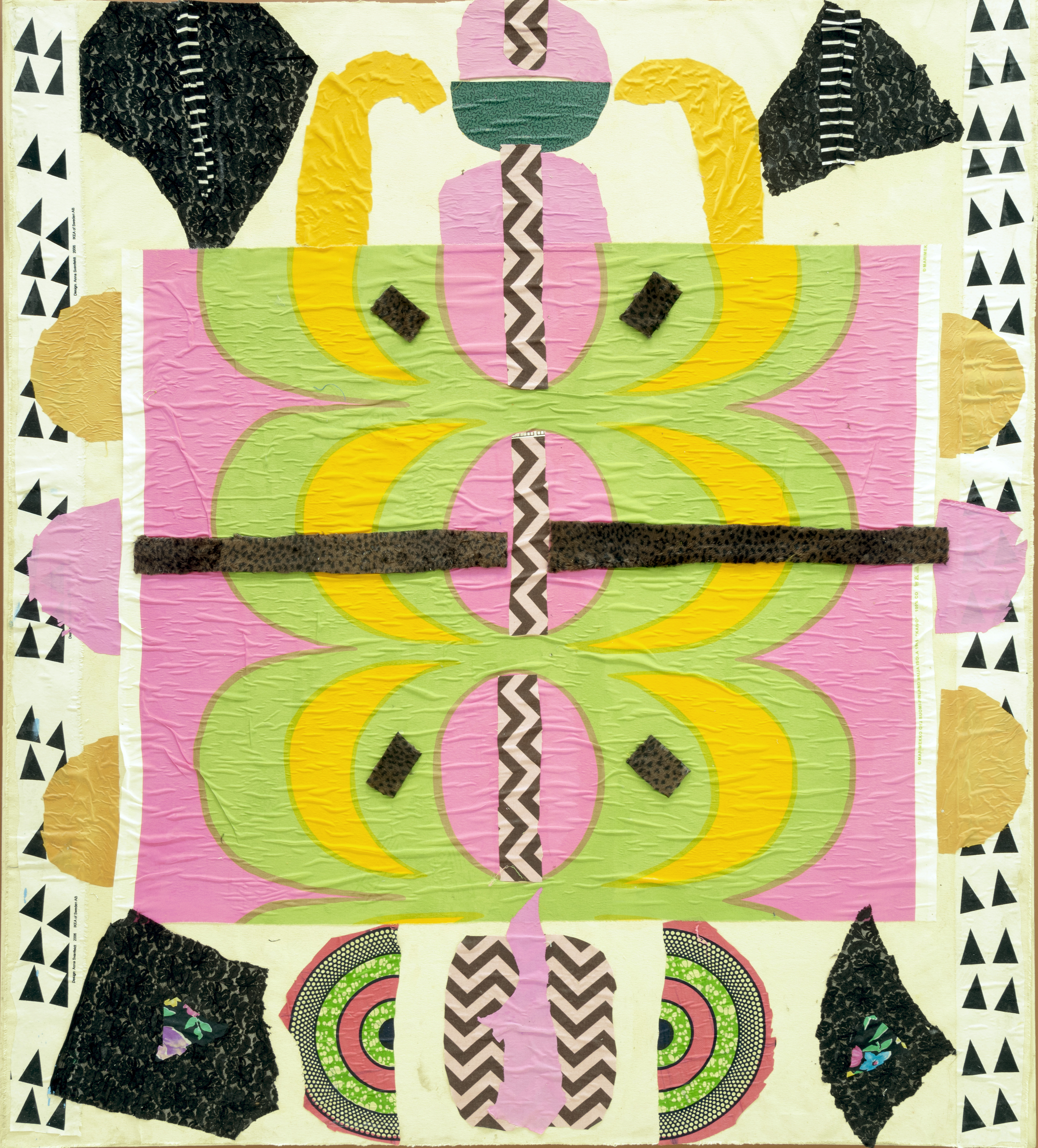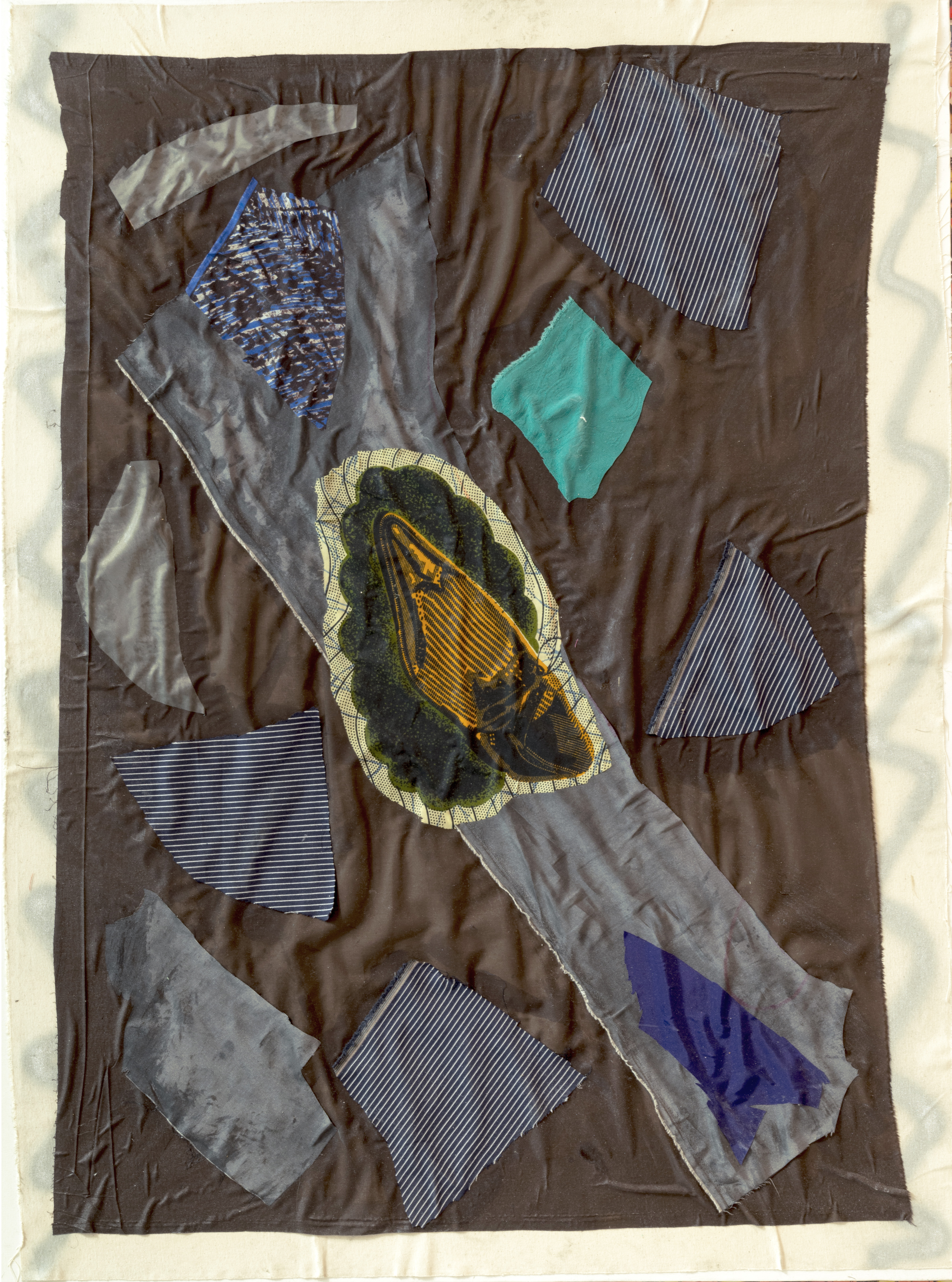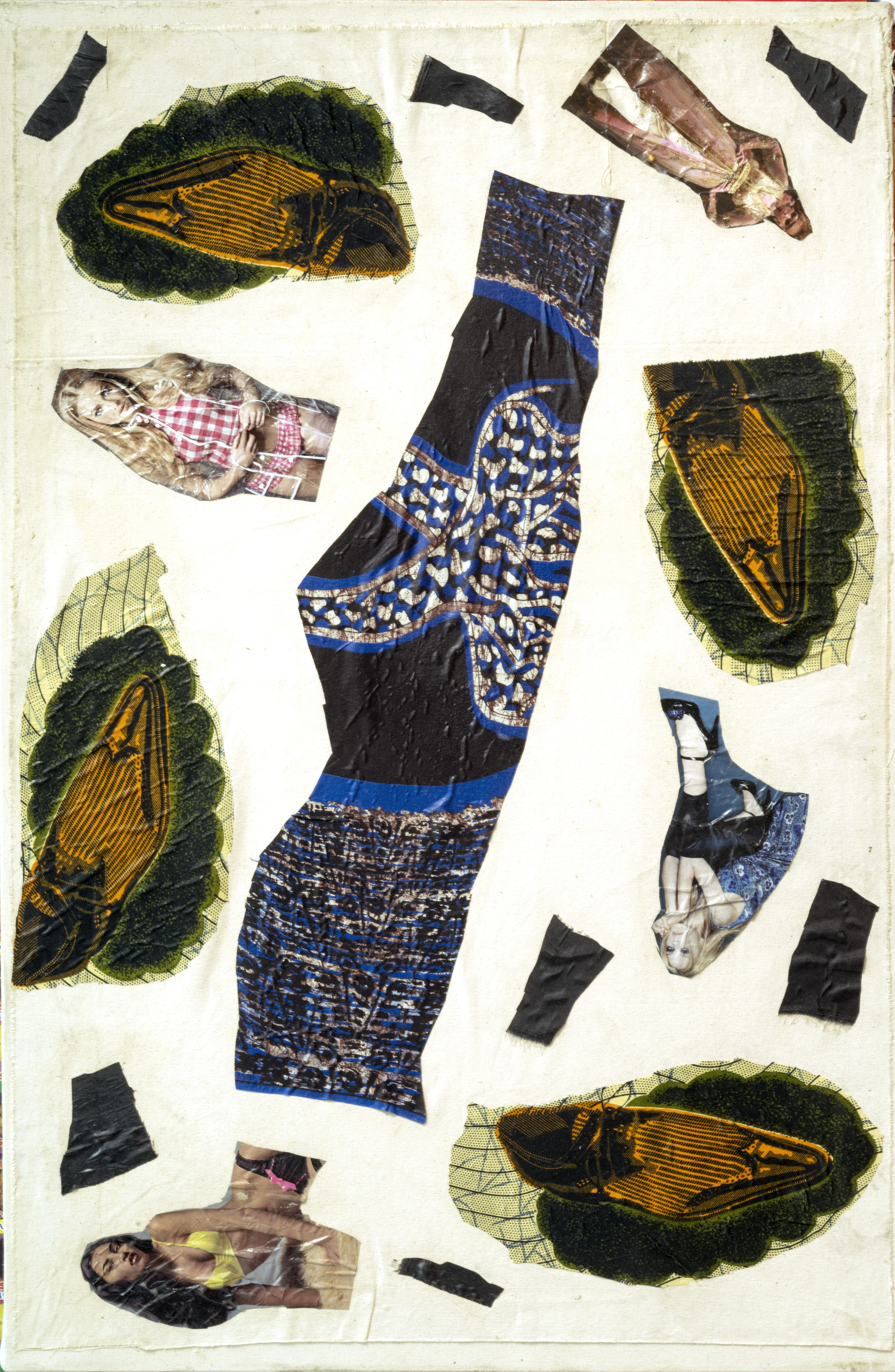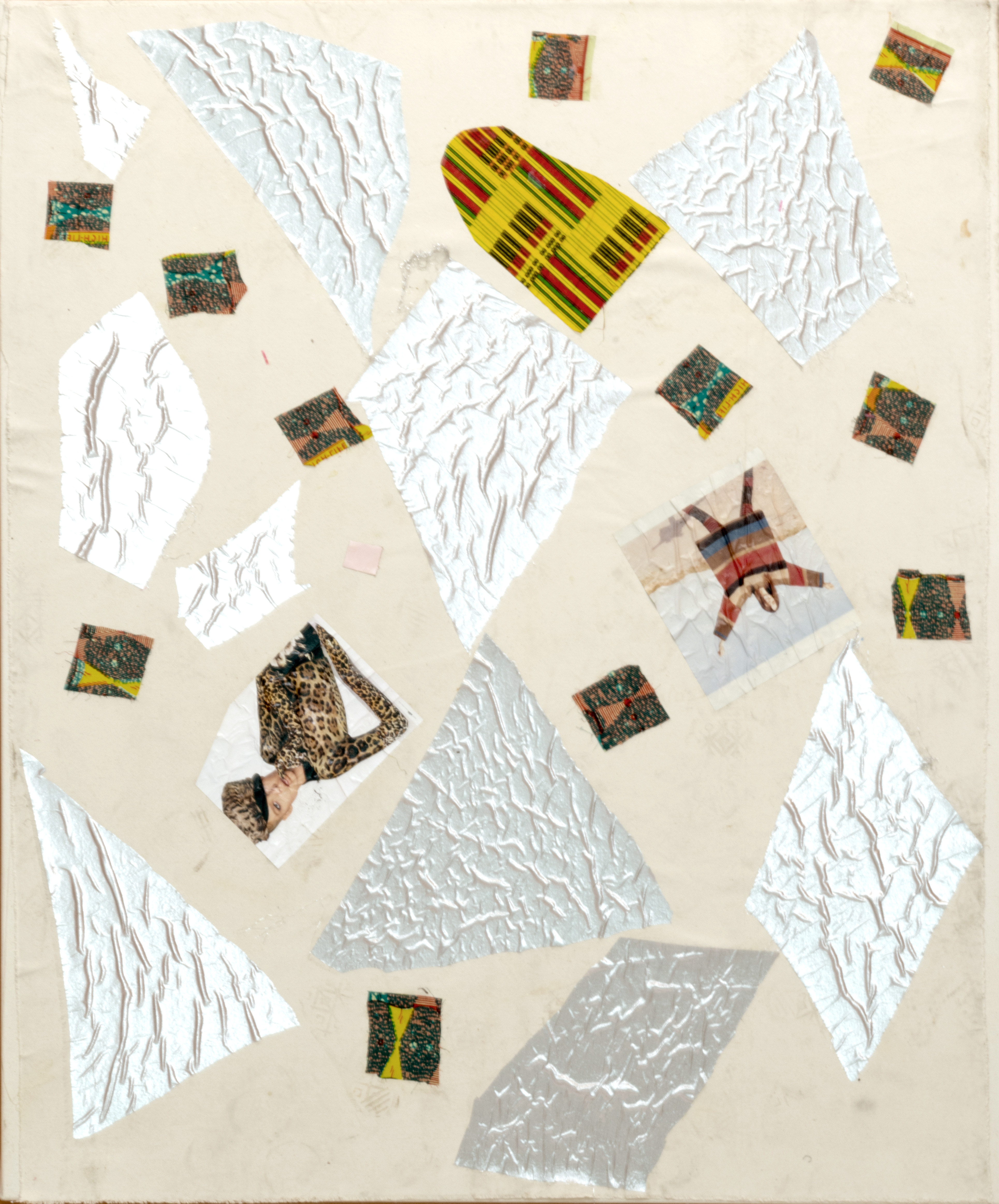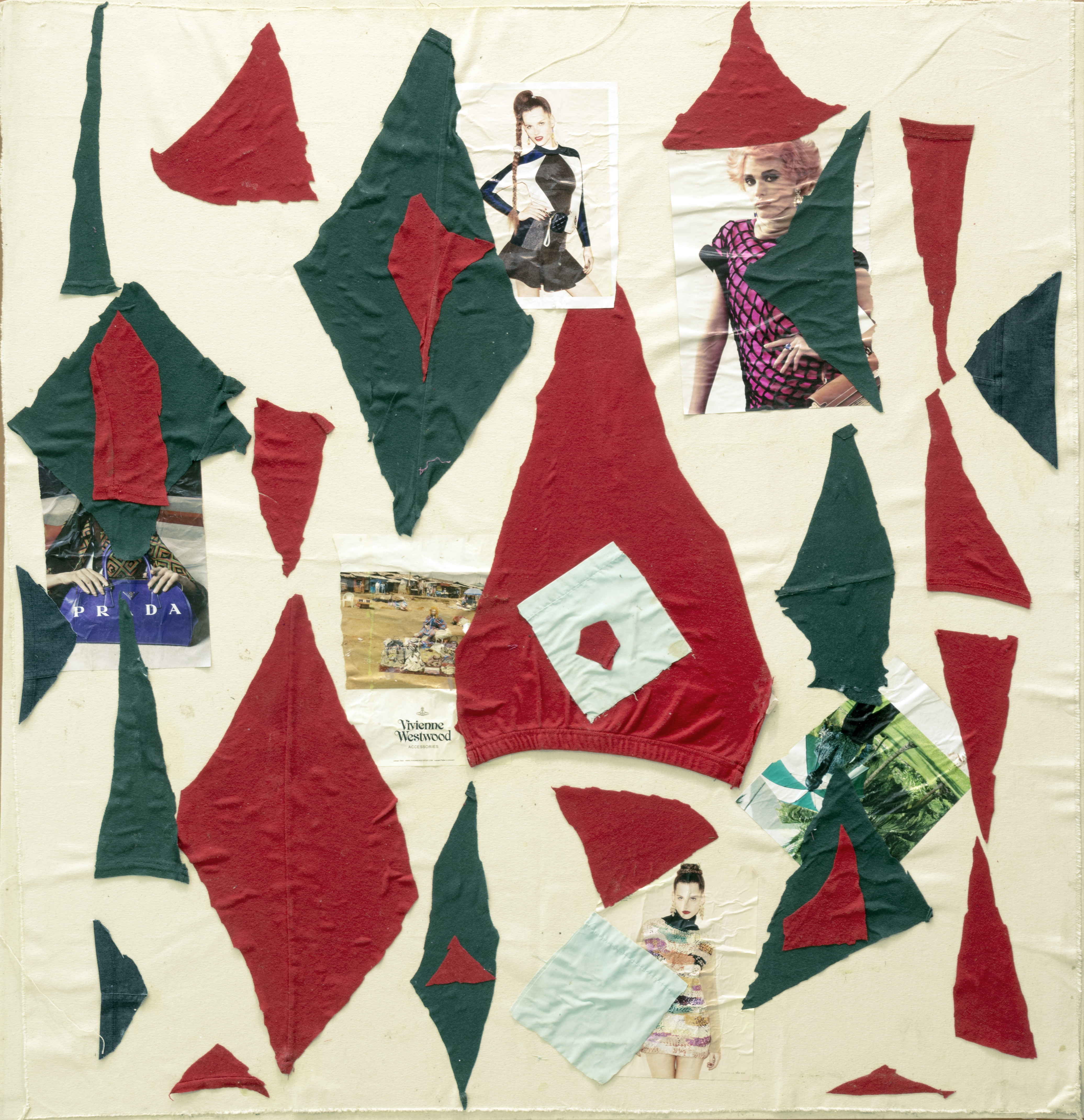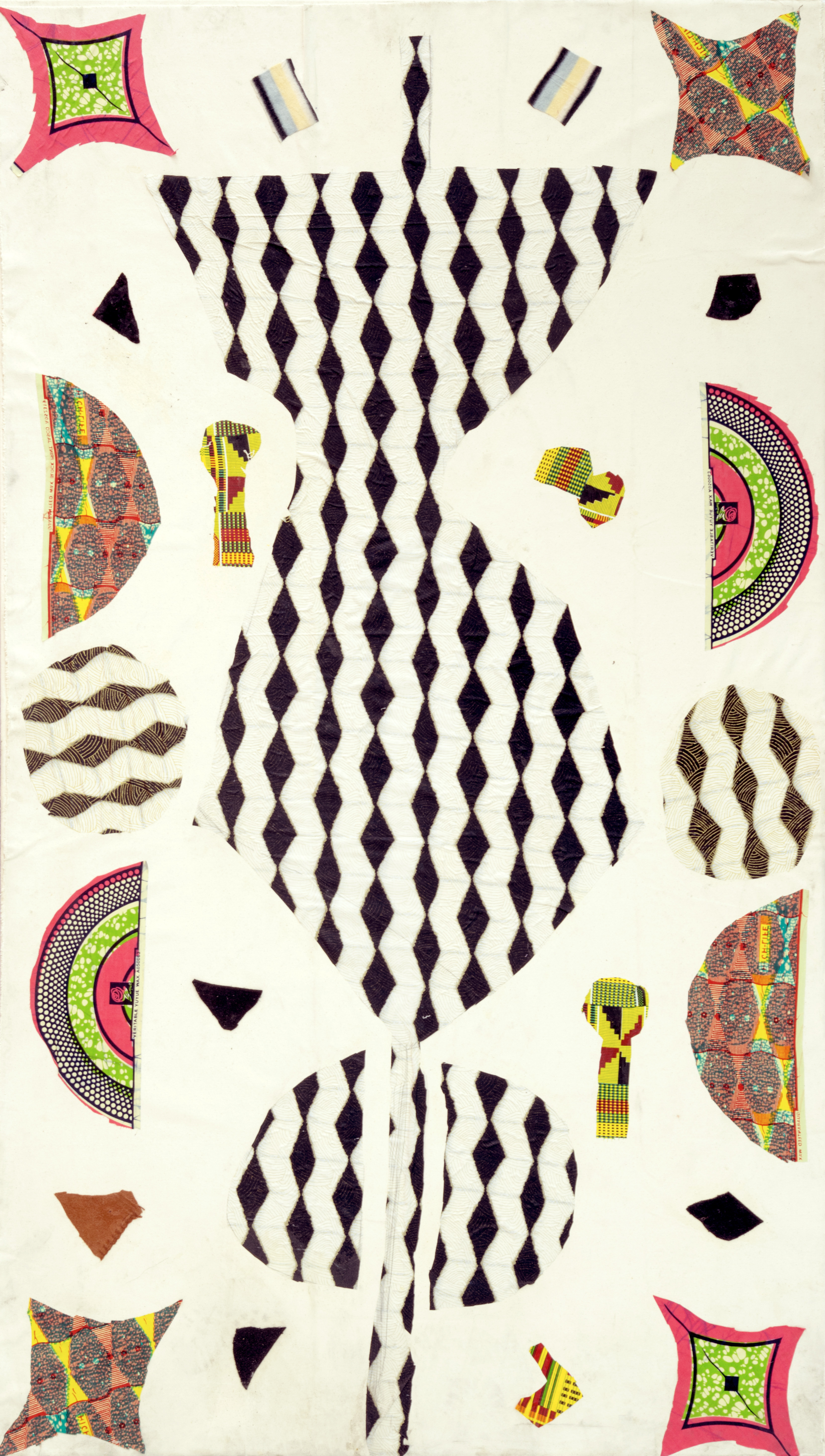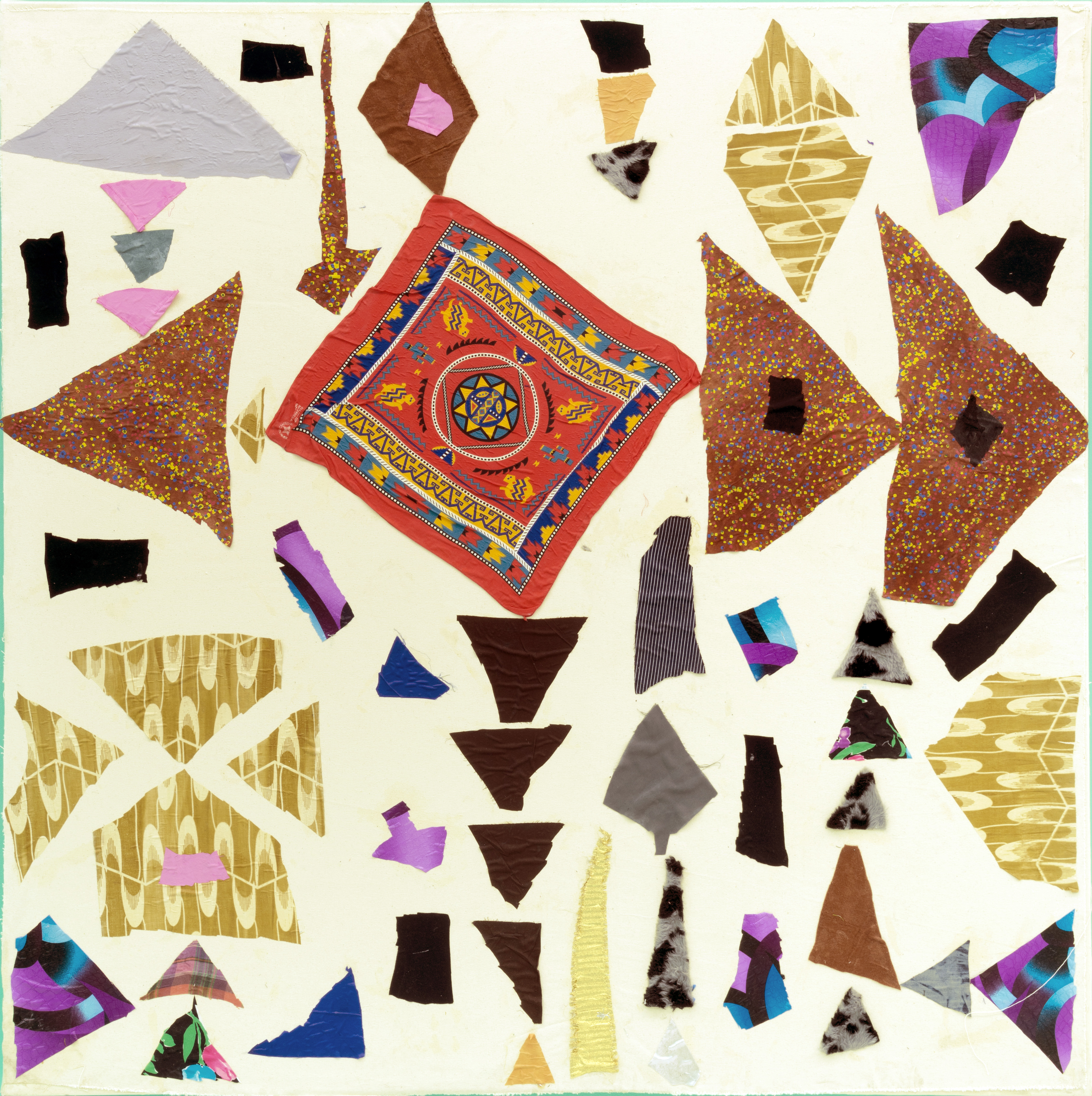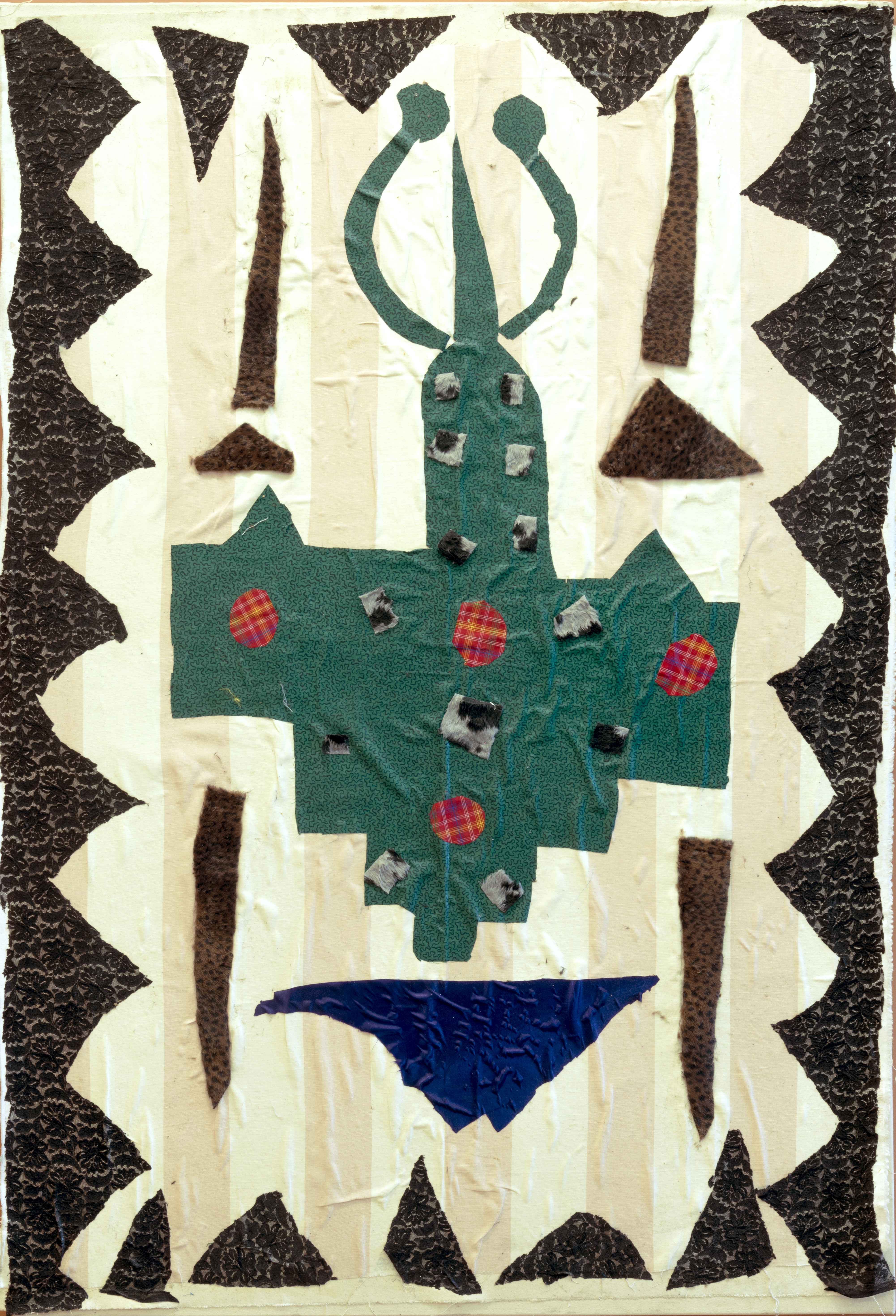The Hole is proud to present Holiday Services an exhibition of new works by Katherine Bernhardt made in collaboration with her husband Youssef Jdia. This new body of collaborative work features collages on canvas that incorporate all manner of discarded textile and magazine, trimming or advertisement. Their composition is often symmetrical and recapitulates the radially balanced layout of the Morrocan rugs that will cover the gallery floors. Wallpapering over some walls and painting others in dark bold colors, the installation will suggest a marketplace or souk using the palette of these shops and the use of advertisements and product labels in interior design. The show will be activated at different times by hair braiding, music and a winter clothing drive.
The canvasses have a rhythm to them and often a harmony of colors and textures, as the Afro-Carribean textiles or Brooklyn “bargain basement” threads mix it up on the surface with a smattering of magazine ladies and luxury logos. Their improvisational inventiveness and hasty scissoring mirror the playfulness of Matisse cutouts or the quilts of Gee’s Bend.
These works connect painting to the constantly changing cultural realities in which the works find themselves. Using recycled materials to jumble the hierarchies of high art with common things, as well as shake up the canny art audience with the average citizen, their overarching goal might be not just to display the unity of art and everyday life but to inject some optimism and beauty into the tacit acceptance of homogenized culture.
The works have a bit of the up-yours of Dada collage à la Jean Arp but perhaps resonate most with more recent movements like Arte Povera, which among other goals sought to create the social and economic unification of all parts of human existence, attacking the corporatization of culture with an art of unconventional materials and style. Simple objects and messages, bodies and behaviours as art, dynamism and energy, and the critique of the culture industry are further commonalities. Contemporary artists like Shinique Smith or Yinka Shonibare who use bundled discarded garments or African textiles respectively also relate, as do recent “it is what it is” explorations of simple and symmetrical abstract compositions by Josh Smith or Joe Bradley.
These works were made in the artists’ studio in Flatbush, where the blasting Reggae, Reggaeton, Soca and Gospel music from Caton Market comes in through the windows and the vendors of fashion, car accessories, home furnishings and Caribbean-themed items traverse the sidewalk. The paintings have a unique rhythm, and it is obvious that the two artists are humming the same tune together. Though Bernhardt is an experienced and celebrated contemporary artist, her collaborator in this show is completely new to art making: Youssef Jdia was born in Erfoud, Morocco, on the edge of the Sahara desert in North Africa. He doesn’t know his real age or birthday, as there are no written records of it. He grew up with nine brothers and sisters, and never went to school. He started working as a mechanic from age 8-12, and after that he became a tour guide in the Sahara desert, where he encountered different people and cultures and learned different languages. He speaks fluently French, Spanish, English, Arabic, and Italian, also some German and Japanese. At age 20 he left Erfoud, (to evade arranged marriage) and moved to the surfer costal town of Essaouira to work at The Maison Berbere selling carpets. Around age 29 he met Katherine Bernhardt while she was looking for carpets, and subsequently moved to Marrakech for three years while awaiting his American visa. Jdia’s son was born two-and-a-half years ago, and he has lived in US for two years now. He does not consider himself an “artist” if you ask him, but says: “I felt happy making the collages and that it was a good experience, I was glad to do it, and the carpet business is quite similar to the art business.” Several women in his family are weavers of rugs, as well. He is also a good cook. This is his first art exhibition in New York City.
According to Bernhardt: “The collages started out of nowhere. There were left over scraps of canvas in my studio and ugly old clothes around, so one day I decided to cut up the clothes and try and make something different. After I made the first couple of collages, I still didn’t know what they were, but I kept making more. Youssef was in my studio watching the baby and me, and decided that he would add to them. Our ideas grew and developed as we started adding found objects like shells, earrings, fleece, denim, bikinis and African fabric from the neighborhood stores. The collages started relating to the Moroccan carpets that we are always around. The collages were totally fun and exciting make; something totally new and original and different. They are all the work of two people, two minds. We make them on the raw canvas on the floor first so that they get worn-out and dirty and so we can change them and move the pieces around. Then we glue them down and mount them on stretcher bars. We use magazine pictures in some of them, which also relates to my earlier solo work of model figure paintings. The works are strongly influenced by Youssef’s growing up around carpets and his eye for color and textile work, and the neighborhood we live in has also influenced our works. A Caribbean tailor donated a huge bag of sequins and fabric and flags that he uses for his Carnival costumes. We incorporate many tribal Moroccan symbols into the cut-outs of the collages, recycling old things to make them new again and into art.”
Katherine Bernhardt (b. Missouri 1975) is an internationally exhibiting artist based in Brooklyn and represented in NYC by Canada Gallery. She is well known for her portraits of women based on glossy magazine culture as well as her recent abstractions of products and rug patterns. Recent solo exhibitions have been presented in Dubai, Copenhagen, Malmo and Paris as well as at Canada Gallery, NYC. Notable group exhibitions include: Material, curated by Duro Olawu, Salon 94, New York (2012), Katherine Bernhardt, Alfred Jensen, Chris Johanson, Chris Martin, Andrew Masullo, Judith Scott, Mitchell-Innes and Nash, New York (2011), and New York Minute, curated by Kathy Grayson, Macro Future Museum of Contemporary Art, Rome and The Garage Center for Contemporary Art, Moscow. (2009, 2011). Outside of galleries and museums, she has painted the cover of Flaunt Magazine and made installations for Chanel and Miss Sixty. She received her MFA from SVA and her BFA from School of the Art Institute Chicago.
For more informaiton please email kathy@theholenyc.com
